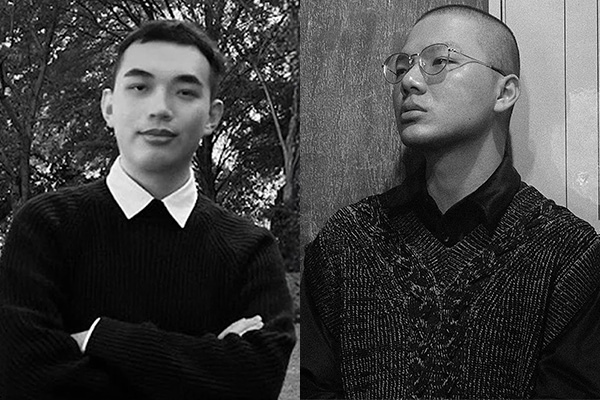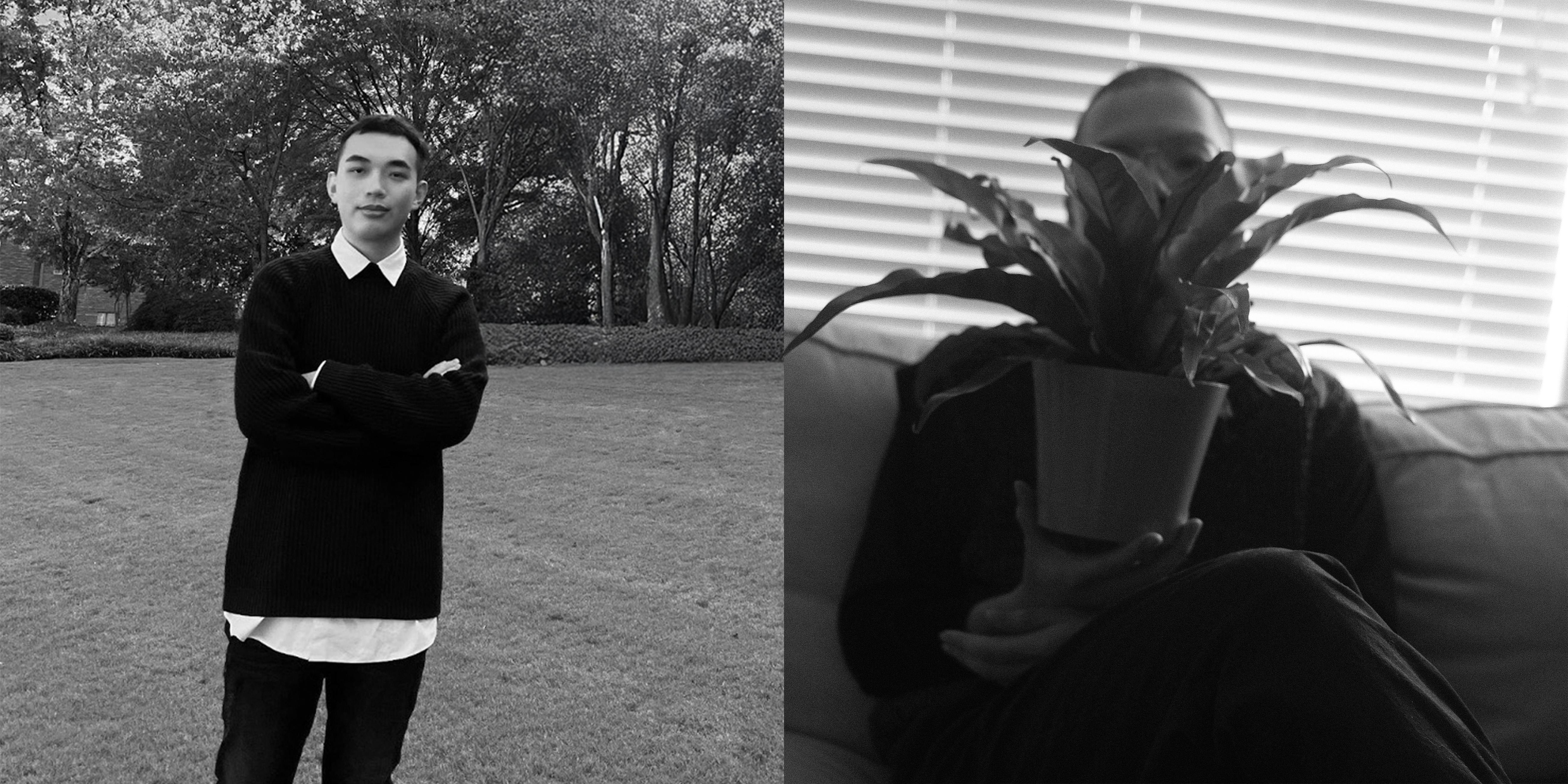
Interview
Rui Wang & Junrong (Arving) Wu
1 Congratulations on winning the MUSE Design Awards! Can you introduce yourself and share about what inspired you to pursue design as a career?
Rui & Junrong: We are Rui Wang and Junrong (Arving) Wu, a creative duo who came together for this project through a shared passion for storytelling and visual design. Rui: I'm an art director and visual storyteller based in Florida, with a background in advertising, branding, photography, and motion graphics. I bring a strategic approach to concept development, ensuring each creative direction is rooted in meaning and emotional connection. My path into the creative world began with a deep appreciation for visual language and a desire to explore identity, time, and emotion through imagery and direction. Arving: I'm a multidisciplinary visual designer based in New York, specializing in visual storytelling, motion, and immersive design. My approach is deeply informed by cultural context and emotional resonance, crafting work that blurs the line between the real and the imagined. For me, it's the joy of transforming ideas into tangible experiences, and the continuous inspiration found in collaboration, experimentation, and empathy. Rui & Junrong: What brought us into this industry is a mutual belief that design is not just about making things look good—it’s about telling stories that move people. We both see creativity as a language—one that transcends disciplines, cultures, and even time. That’s why in our work, especially in The Soundscapes Archive, we aim to build immersive, emotionally driven narratives that invite audiences to reflect, feel, and connect. This award-winning project is not just a celebration of design, but of life itself—its flow, fragility, and resonance. We're grateful for the opportunity to share this vision with the world, and even more excited to continue pushing the boundaries of what design can communicate.
2 What does being recognized in the MUSE Design Awards mean to you?
Being recognized by the MUSE Design Awards means a great deal to us. It feels like all the late nights, brainstorming sessions, and creative risks we took with The Soundscapes Archive truly paid off. For us, it’s not just about the award—it’s about knowing that our work connected with people. It’s a reminder that design can tell powerful stories and spark genuine emotion. It also gives us the motivation to keep pushing forward, keep experimenting, and continue creating work that feels honest and meaningful. We’re incredibly grateful—and even more excited for what’s to come.
3 How has this achievement impacted your career, team, or agency, and what opportunities has it brought so far?
Winning the MUSE Design Award has been a major milestone for us. It gave us a huge confidence boost and affirmed that our ideas and creative approach truly resonate with others. Since receiving the award, we’ve connected with more people in the design community—fellow creatives, potential collaborators, and professionals curious about The Soundscapes Archive. It’s opened up new conversations and made it easier for us to share our work and vision with a wider audience. More than anything, it’s motivated us to keep exploring meaningful stories and pushing our creative boundaries. This recognition is a powerful reminder that we’re on the right path—and it’s just the beginning.
4 What role does experimentation play in your creative process? Can you share an example?
xperimentation is at the heart of our creative process. It allows us to push boundaries, explore unconventional ideas, and discover unique ways to communicate meaningful stories. In The Soundscapes Archive, experimentation was essential in blending auditory and visual elements to evoke emotion. One example is how we approached the texture and materials for the vinyl packaging. We experimented with different printing techniques and finishes to reflect the concept of sound waves and memory, aiming to create a tactile experience that mirrors the warmth and imperfection of analog sound. This hands-on exploration helped us achieve a design that resonates emotionally with the audience. Through experimentation, we learned that embracing unpredictability often leads to more authentic and impactful results—something we continuously strive for in every project.
5 What's the most unusual source of inspiration you've ever drawn from for a project?
One of the most unusual sources of inspiration for The Soundscapes Archive came from the concept of memory itself—specifically, how memories fade, distort, and resurface over time, much like the crackles and imperfections of vinyl records. We were fascinated by how sound can evoke powerful emotions and transport people to specific moments in their lives. To capture this essence, we studied not just music but also ambient noises from everyday life—the hum of a city, the rustle of leaves, the echo of distant conversations. These seemingly ordinary sounds became symbols of fleeting memories, influencing the textures and visual elements of our packaging design. This approach allowed us to create something deeply personal yet universally relatable, reminding us that inspiration can come from even the most overlooked moments.
6 What’s one thing you wish more people understood about the design process?
One thing we wish more people understood about the design process is that great design is not just about aesthetics—it’s about storytelling, emotion, and problem-solving. It’s a journey filled with exploration, experimentation, and sometimes failure. Each element, from color choices to textures, carries meaning and is carefully considered to evoke a specific feeling or message. For The Soundscapes Archive, the goal wasn’t just to create visually appealing vinyl packaging, but to encapsulate the essence of sound and memory. It took countless iterations, refining details that may seem subtle but collectively make a profound impact. We want people to know that behind every polished final product is a long process of trial and error, deep thought, and emotional investment.
7 How do you navigate the balance between meeting client expectations and staying true to your ideas?
In The Soundscapes Archive project, there was no traditional client—it was a personal exploration of sound, life, and aesthetics between me and Junrong (Arving) Wu. This gave us the freedom to experiment and push creative boundaries without the need to fit into predefined expectations. Our goal was to create something meaningful, where every design element reflected our interpretation of how sound captures moments and memories. Balancing creative vision wasn’t about compromising for someone else’s expectations; it was about staying authentic to our shared ideas while ensuring the final work could resonate with others. We constantly asked ourselves, “Does this piece evoke the emotion we intended?” and “Is this an honest expression of our artistic journey?” In the end, it’s this genuine, personal approach that we believe made the project stand out.
8 What were the challenges you faced while working on your award-winning design, and how did you overcome them?
One of the biggest challenges we faced while working on The Soundscapes Archive was translating an abstract concept—the relationship between sound, life, and memory—into a tangible, visually compelling design. It was difficult to ensure that every element, from typography to materials, reflected the emotional depth we aimed to convey. Another challenge was maintaining cohesion while experimenting. We wanted to push boundaries, but with so many creative directions to explore, it was easy to get lost. To overcome this, we constantly revisited our core concept and asked whether each design choice served the narrative we wanted to tell. Through countless iterations, feedback sessions, and trust in our instincts, we were able to shape a final piece that felt authentic and impactful. The process wasn’t just about solving problems; it was about embracing them. Every challenge forced us to refine our vision and dig deeper into what the project truly meant to us.
9 How do you recharge your creativity when you hit a creative block?
When we hit a creative block, stepping away from the work is often the best way to recharge. Whether it’s going for a walk, listening to music, or engaging with other forms of art, giving ourselves space helps reset our perspective. For The Soundscapes Archive, immersing ourselves in different sounds—from nature to everyday city noises—helped spark new ideas and connections. Collaboration and open conversation also play a crucial role. Discussing thoughts with each other, even if they seem unrelated at first, often leads to unexpected insights. Creativity isn’t always about forcing ideas; sometimes, it’s about creating the right environment for inspiration to flow naturally.
10 What personal values or experiences do you infuse into your designs?
In our designs, we infuse a deep commitment to creativity and storytelling. We believe that design goes beyond aesthetics — it's about conveying emotion, capturing moments, and connecting with people on a personal level. Our work is driven by a passion for creating immersive narratives that evoke a sense of meaning, often drawing inspiration from themes like time, identity, and memory. We value the process of exploring the intangible and transforming abstract concepts into tangible experiences, ensuring that the viewer doesn’t just see, but feels the story. For us, it’s about creating designs that resonate emotionally, whether through subtle details or bold visual statements. Each project is an opportunity to invite others into a journey that reflects not only the external world but also the inner worlds we all carry.
11 What is an advice that you would you give to aspiring designers aiming for success?
Our advice to aspiring designers is to stay curious and embrace the learning process. Design is an ever-evolving field, so it’s important to experiment and challenge yourself constantly. Don’t be afraid to step outside your comfort zone, as some of the most meaningful work comes from taking risks and exploring new perspectives. Focus on developing your storytelling skills, as strong narratives can make your designs more impactful. Whether you’re working on a branding project, packaging design, or motion graphic, always consider the emotional connection you want to establish with your audience. Lastly, collaboration is key. Working with others, sharing ideas, and being open to feedback not only helps you grow but also fosters creativity. Surround yourself with inspiring people, and never stop pushing your creative boundaries.
12 If you could collaborate with any designer, past or present, who would it be and why?
Honestly, we’d love to collaborate with anyone who’s passionate, curious, and has a strong point of view. Whether they’re an industry legend or an emerging creative, what matters most to us is the energy and the ideas they bring to the table. That said, we have huge respect for designers like Paul Rand—his work is timeless and shows how simplicity can carry so much meaning. But at the end of the day, we’re always excited by people who want to tell meaningful stories, challenge norms, and explore new ways of connecting with audiences. That kind of creative chemistry is what makes any collaboration special.
13 What's one question you wish people would ask you about your work, and what's your answer?
One question we wish people would ask is, "How do you infuse emotion into your designs?" Our answer would be that emotion is at the heart of every project we work on. We believe that design isn’t just about creating something visually appealing—it’s about crafting an experience that resonates with the audience on a deeper level. For us, every design decision is driven by the emotional journey we want to take the viewer on. Whether it’s through color, form, or the story we tell, we aim to evoke feelings and memories that go beyond the surface. It’s about creating a connection between the design and the viewer, making the work not just seen, but truly felt.


